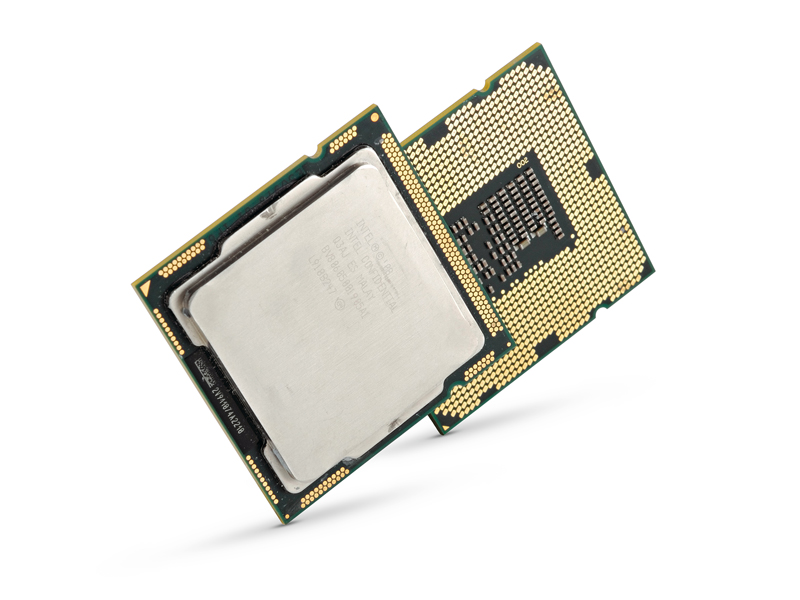
Take a moment to peruse Intel's current processor price list and you'll find that it contains no fewer than 70 products for desktop PCs.
That excludes mobile and server chips, which would bring the total number of available chips to well over 200. What's more, Intel sells many models that don't appear in the official price list.
As for AMD, its desktop processor list is admittedly a little shorter, but like Intel, it has plenty of extra chips that don't appear in the official lineup, but are sold to system builders.
Factor in some pretty baffling naming conventions for these chips, particularly from Intel, along with a buying public with little understanding of and even less interest in the technical details, and you have a pretty bizarre situation.
It looks even odder when you consider that PC sales are actually in gradual decline. Part of the reason for that, conventional wisdom dictates, is the rise of alternative computing devices such as tablets and smartphones.
And therein lies the rub, because when it comes to those disruptive computing platforms, the tendency is towards simplified, streamlined hardware. When you're buying an Apple iPad, for instance, you needn't worry about the processor specification. It's only available with a single model known simply as the A5.
In denial
Funnily enough, the absence of 17 different processor options hasn't hurt iPad sales. The PC industry, I therefore conclude, is in denial.
Get daily insight, inspiration and deals in your inbox
Sign up for breaking news, reviews, opinion, top tech deals, and more.
In the past, it no doubt made sense for companies to chop the market up into ever smaller slivers, the better to encourage upsales to more expensive and profitable processors. But these days, the buzz isn't about MHz and MB, it's about apps and services and interfaces. Meanwhile, the Intel and AMD processor price lists are becoming ever more complex and irrelevant.
In fairness, you could argue that the real problem with current PC processors is that they're too good and have been for several years. There's very little today in terms of desktop computing tasks and applications that a quad-core processor from a few years ago can't handle with effortless aplomb.
The cycle of constant upgrades that kept the industry growing looks increasingly broken. Instead of obsolescence inside 18 months, a decent PC bought today will still be good enough for almost any computing task for at least five years.
In that context, you might think it doesn't matter what Intel and AMD call chips or how they're marketed, but I don't buy into that. In fact, I'm not convinced that PC sales should be shrinking.
For starters, few of the new devices that have appeared in recent years are replacements for PCs. Without exception, everyone I know who owns a tablet computer also owns a powerful desktop or portable PC. Usually, they own several.
So, the first thing I reckon both Intel and AMD should do is aspire to greater transparency. Quite why Intel, for instance, goes out of its way to obscure the key features in its processor lineup, I have no idea.
Take a typical chip like the Core i5-2400. There's absolutely nothing in the naming that tells you how many cores it has, how fast it is, or frankly anything that most buyers might be interested in. At least AMD uses X2, X4 and so on, helping buyers understand how many cores they re getting for their cash.
Disabled features
In a similar vein, I think it's about time we saw an end to the unnecessary disabling of features in PC processors. While I appreciate that higher prices need to be charged for larger and more complex chips, I also believe it's no longer acceptable to sell physically identical products at different prices because you've turned certain features on or off.
Admittedly, most buyers aren't well enough schooled in the intricacies of processor design to understand that an i7-2600 is in fact the same chip as an i5-2300 with a 100 per cent mark up. But I also reckon the market eventually snuffs out rip offs. At this stage in the life cycle of the PC, obfuscatory branding only serves to slow sales.
The final part of the puzzle is one that the broader PC industry has to address together. Personal computers are preposterously cheap and that means the benefits of more machines per household are now more accessible than ever. A decade ago, a decent PC might have cost £1,500. Today, that buys you a pair of powerful desktops and a cheap portable.
No more family fights over PC access or kids messing with their parent's files. Everyone can have their own PC. It's time to ditch silly branding and processor upselling and make buying PCs as easy and friendly as possible.